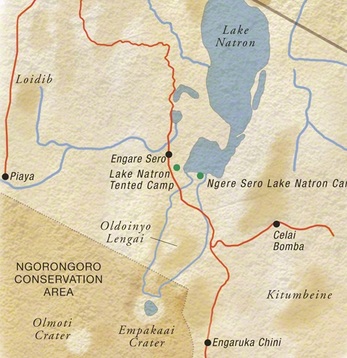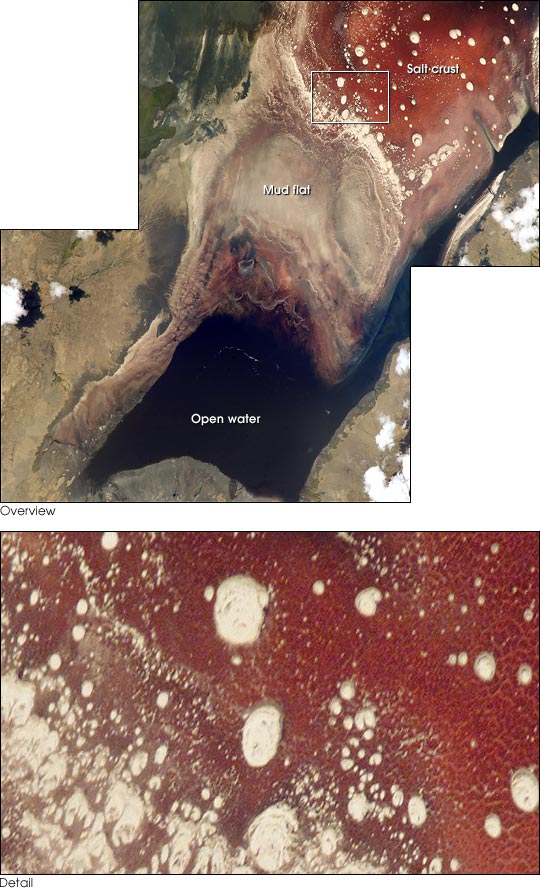

#LAKE NATRON LOCATION SERIES#
Recently 13, a hyperresolved (0.01° × 0.01°) world map of NH 3 was presented, following the combined exploitation of all available IASI satellite data over ten years and a series of algorithmic improvements 14. Satellite measurements are currently available from four instruments: AIRS 9, TES 10, CrIS 11 and IASI 12. Sources of atmospheric ammonia include animal waste, fertilizers, combustion (biomass burning, waste burning, transport), industry (production of chemicals, manufacturing processes), soils, plants and oceans 3, 6, 7.Ībout a decade ago, it was discovered that infrared satellites can detect and measure atmospheric NH 3, which resulted in the first measurement-based global maps of its distribution 8. Largely due to the widespread availability of industrially fixed nitrogen 2, atmospheric emissions of NH 3 are increasing steadily 3, 4, with devastating effects on air quality, ecosystems and climate 5. As a by-product, we also show that hyperspectral infrared sounders such as IASI are capable of mapping different types of evaporative minerals such as trona and thermonatrite.Īmmonia (NH 3) plays a critical role in the global biogeochemical cycle of nitrogen 1 as one of the key components of reactive nitrogen. We formulate six processes that may explain why the largest losses are observed specifically over concentrated brines and/or exposed sediments. High temperatures and alkalinity are known to promote NH 3 losses from soda lakes. The likely source of NH 3 at Lake Natron is decomposition of organic material, either from rivers and springs or produced in the lake (plankton, bird excreta). The timing is different from the agricultural dominated NH 3 emissions in the wider Natron area, which peak early in the year, after the first wet season. The largest NH 3 column loadings generally occur at the end of the dry season in September–November over Lake Natron’s largest mudflat, that is exposed with receding water levels. Temporal analysis reveals that the emissions are episodic and linked with the lake’s surface area. Here we explore 10 years of IASI NH 3 satellite data and other publicly available datasets over the area to characterize the natural NH 3 emissions in this unique ecosystem.

Its remote location and the absence of nearby large anthropogenic sources suggest that the observed NH 3 is mainly of natural origin. The lake is in the centre of an endorheic (limited drainage) basin and has shallow, saline-alkaline waters. “You’d literally get, say, a hundred finches washed ashore in a 50-yard stretch.In a recent global analysis of satellite-derived atmospheric NH 3 data, a hotspot was observed in the vicinity of Lake Natron, Tanzania. I saw entire flocks of dead birds all washed ashore together, lemming-like,” he says. During dry season, Brandt discovered, when the water recedes, the birds’ desiccated, chemically-preserved carcasses wash up along the coastline. Brandt theorizes that the highly-reflective, chemical dense waters act like a glass door, fooling birds into thinking they’re flying through empty space (not long ago, a helicopter pilot tragically fell victim to the same illusion, and his crashed aircraft was rapidly corroded by the lake’s waters). A swallow © Nick Brandt 2013, Courtesy of Hasted Kraeutler Gallery, NYĪs you might expect, few creatures live in the harsh waters, which can reach 140 degrees Fahreinheit-they’re home to just a single fish species ( Alcolapia latilabris), some algae and a colony of flamingos that feeds on the algae and breeds on the shore.įrequently, though, migrating birds crash into the lake’s surface.


 0 kommentar(er)
0 kommentar(er)
